A masterpiece is a masterpiece, but there’s something special about a creative person’s early work. Intricate first pieces from ceramicists, before growing demand forces them to streamline their process; opening restaurant menus bristling with chefs’ ambitions, before turnover and rising costs force them to add a chicken sandwich; experimental blog posts before a writer hit it big or quit the game—I collect them all.
There’s a procedural earnestness to these early works that I love. They take nothing for granted and, if a little obviously, they make the artist’s intentions are clear. You can feel the tension between what an artist wants to achieve and what their limited ability allows them to convey. Later productions will appear more polished, but they’ll miss the raw, crackling potential of these first pieces. The possible futures they point to are more enticing than any actual one we arrive at together.
It’s in this earnest, proud-yet-self-critical spirit that I offer my first proper forest planting, made from nine ficus microcarpa cuttings.
Technically this isn’t my first forest—that honor goes to a maple and ginkgo grove that lasted a month before squirrels destroyed it. The fig cuttings used here have been in the works for more than a year. Every time I trimmed one of my ficus, I considered which cuttings had character worth saving. I rooted and grew them out with a forest planting in mind, deciding which would be the larger “anchor” trees of the forest and which would act as smaller, younger support.
In my current plan, this vigorous cutting is the star of the show: the largest and most noticeable tree that first draws your eye. Here’s how it looked in June.
And in January before that.
Two other cuttings in this pot grew into the trees on the left and right edges of the forest.
Objectively, I know these are pencil-thin twigs in a pot. If this were anyone else’s post on a bonsai forum I’d scroll past without a second thought. But this is my forest, with material I’ve grown myself, painstakingly root-trained, fertilized, and pruned to fit my design. How could I not be proud?
The best forest bonsai advice I found suggested a slow and steady approach: to prune and train each tree individually before planting them together. I was soon overwhelmed with tiny pots of propagations in different stages, which I’d check every few months to see if they needed up-potting or a change of substrate. Organic soil or pure sphagnum moss didn’t develop the best roots, but saved me from watering a dozen cuttings a day. As the keepers gained more character, I transitioned them to progressively more inorganic bonsai soil, taking care to arrange their surface roots into credible nebari.
Once the roots were trained to my liking, I grew them out free, then cut them back whenever I needed room under my grow light. Some cuttings died. Others I gave away. I waited for the opportunity to start new cuttings, and began arranging pots on a table to sketch out different designs.
Forest bonsai have some basic aesthetic rules. The thickest trees should usually be the tallest, to communicate their age and presence. The trees shouldn’t be planted in neat rows or spaced apart evenly; they should look like a natural forest, or the idealized version of one. You create areas of focus by grouping several trees together, and use negative space to refine the look and feel of the design.
I began with the largest trees and arranged the smaller ones around them. I layered their roots so they’d weave together, forming one cohesive root ball. Then I tweaked planting angles, anchored the trees with wire, and applied a thin layer of top soil.
The pot was full of trees, but for all my planning, for all the rules I studied, I managed to follow none of them. Originally there were five trees. Looking from the top down, they were a dead ringer for dots on a domino.
I added two trees to break up the same-sameness. Then two more. Still not right.
One of the anchor trees sat smack dab in the middle of the pot. Over several days, my eye kept involuntarily drifting toward it, pondering its aesthetic wrongness. So I ripped it out and repositioned it off center. The tree continued to grow like nothing happened. With that one transplant, the rest of the design snapped into place.
For now, I’m satisfied. I’m leaving room for growth. I’ll let the trees get settled for four to six months, then check their roots; I want them to colonize every cubic centimeter of this deep growing pot. Then I can begin to cut them back and transition the forest into progressively shallower pots.
Meanwhile the new foliage growth will thicken the trees and help them build one large, oval-shaped canopy over the whole forest. You can see the rough outline of that canopy in these photos. We’ll see how this early work fills in the details.
Tree reading
I feel very seen by Andrea Grimes’ honest admission that she enjoys a…circumscribed interaction with nature. [Home with the Armadillo]
A shonda for New York City’s urban forest: new tree planting has reached its lowest point in 15 years! [Gothamist]



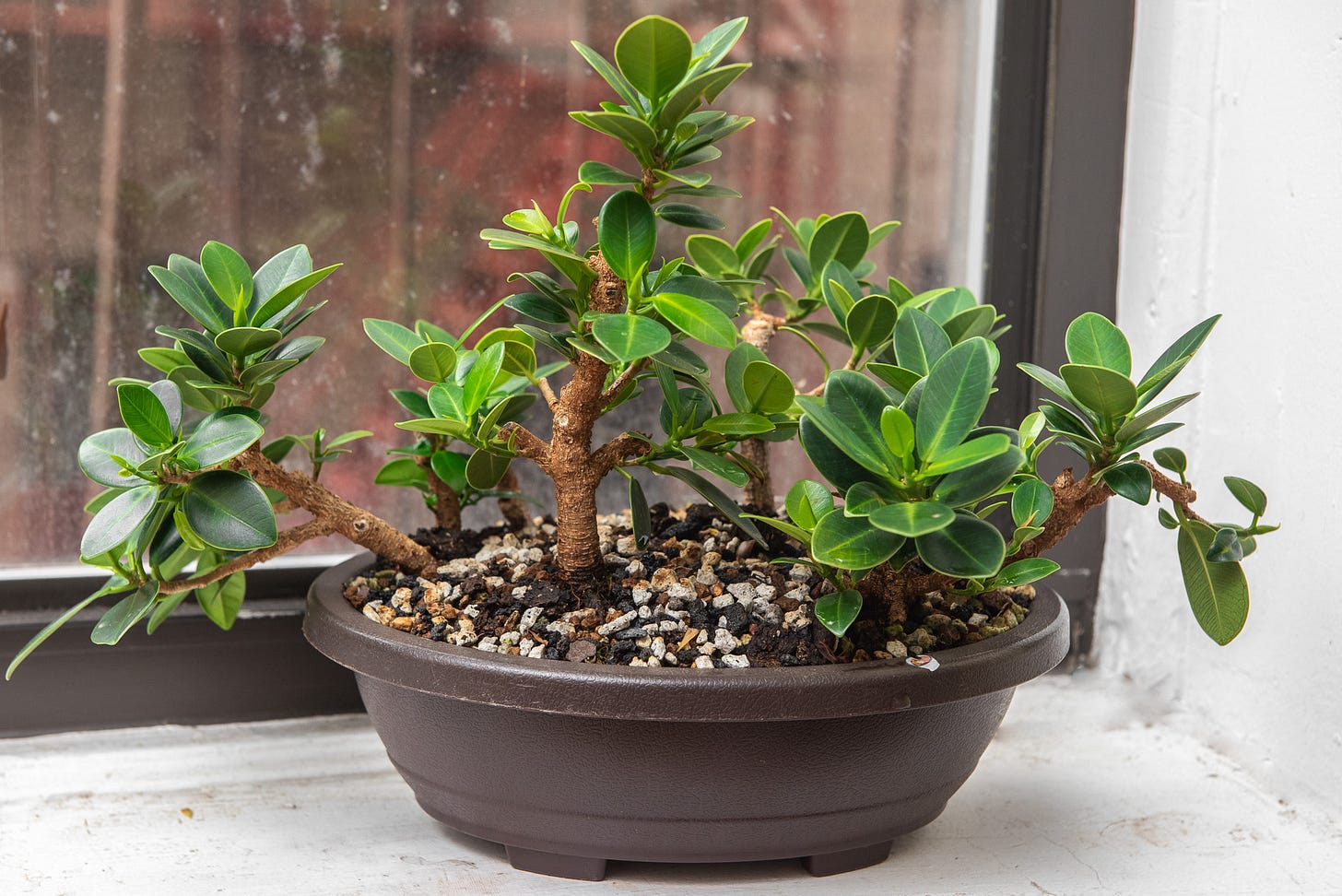

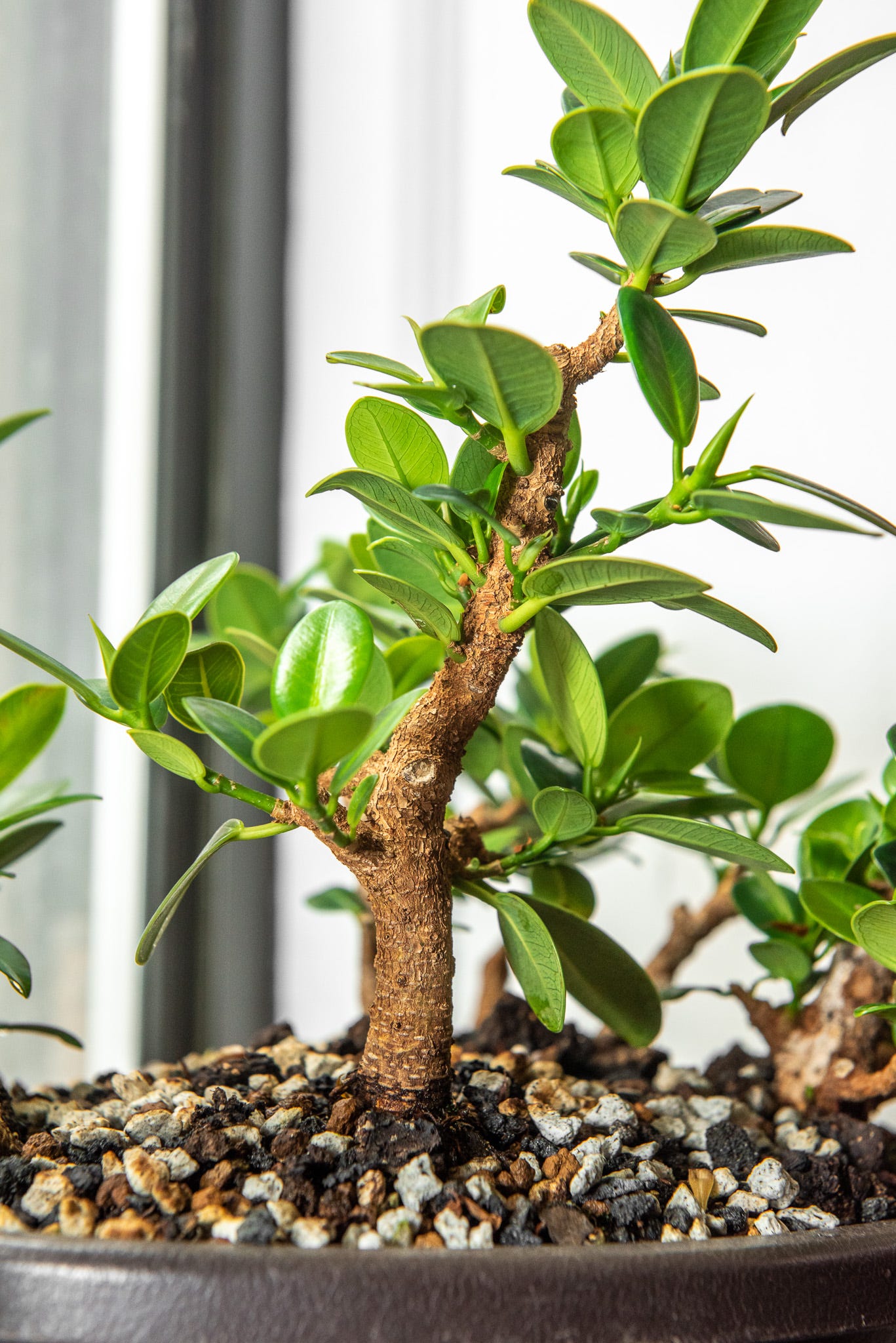

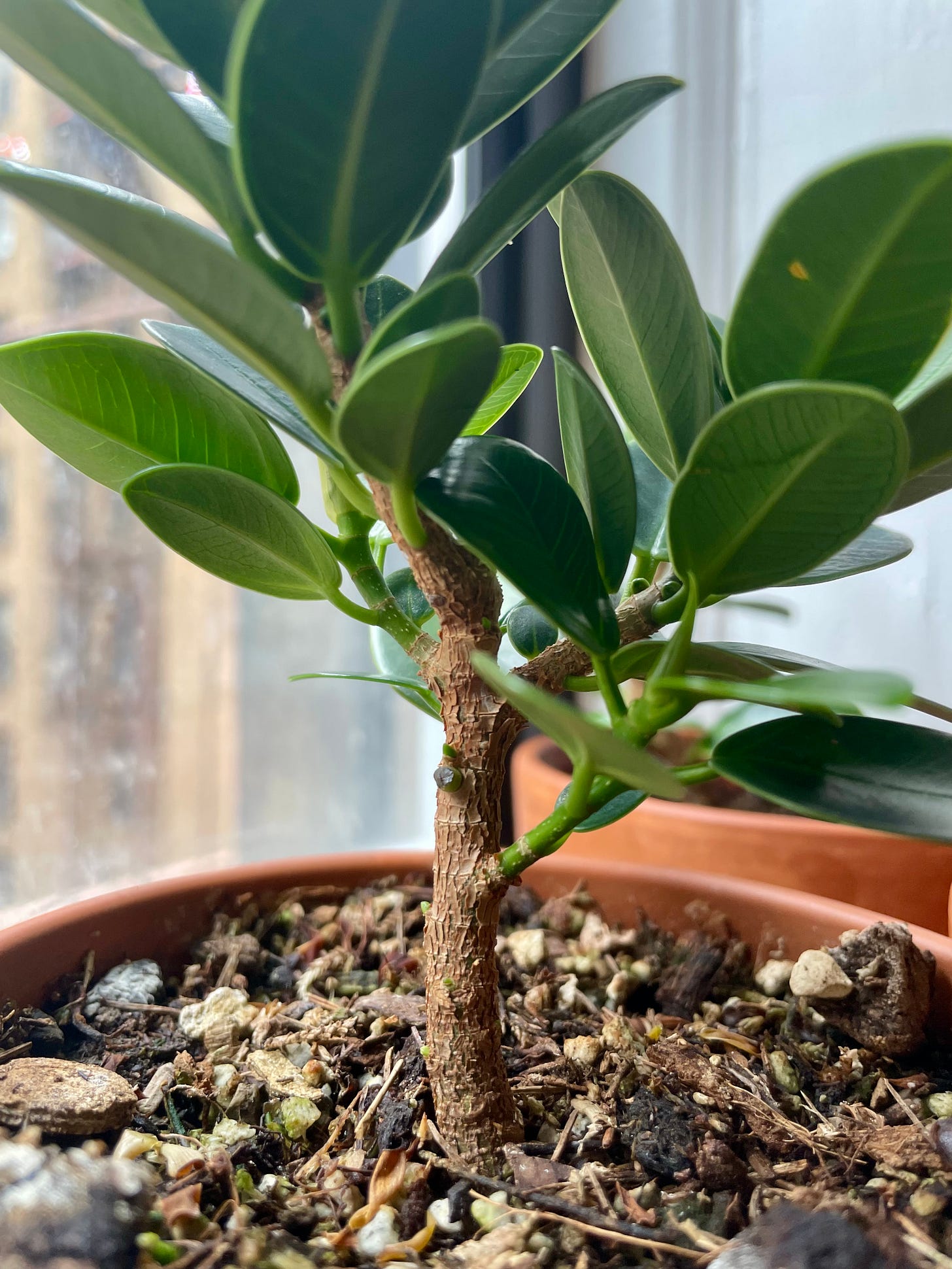
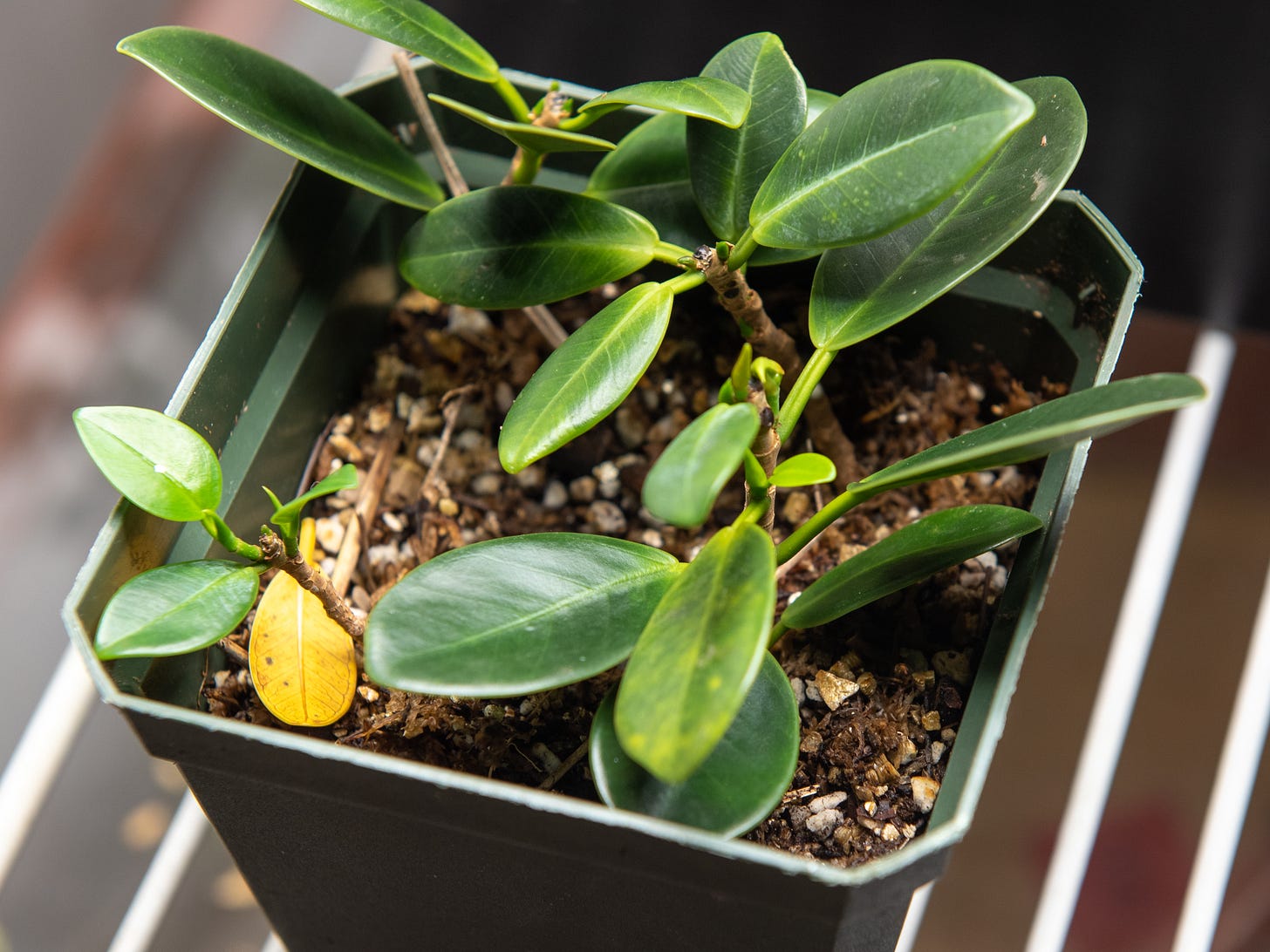
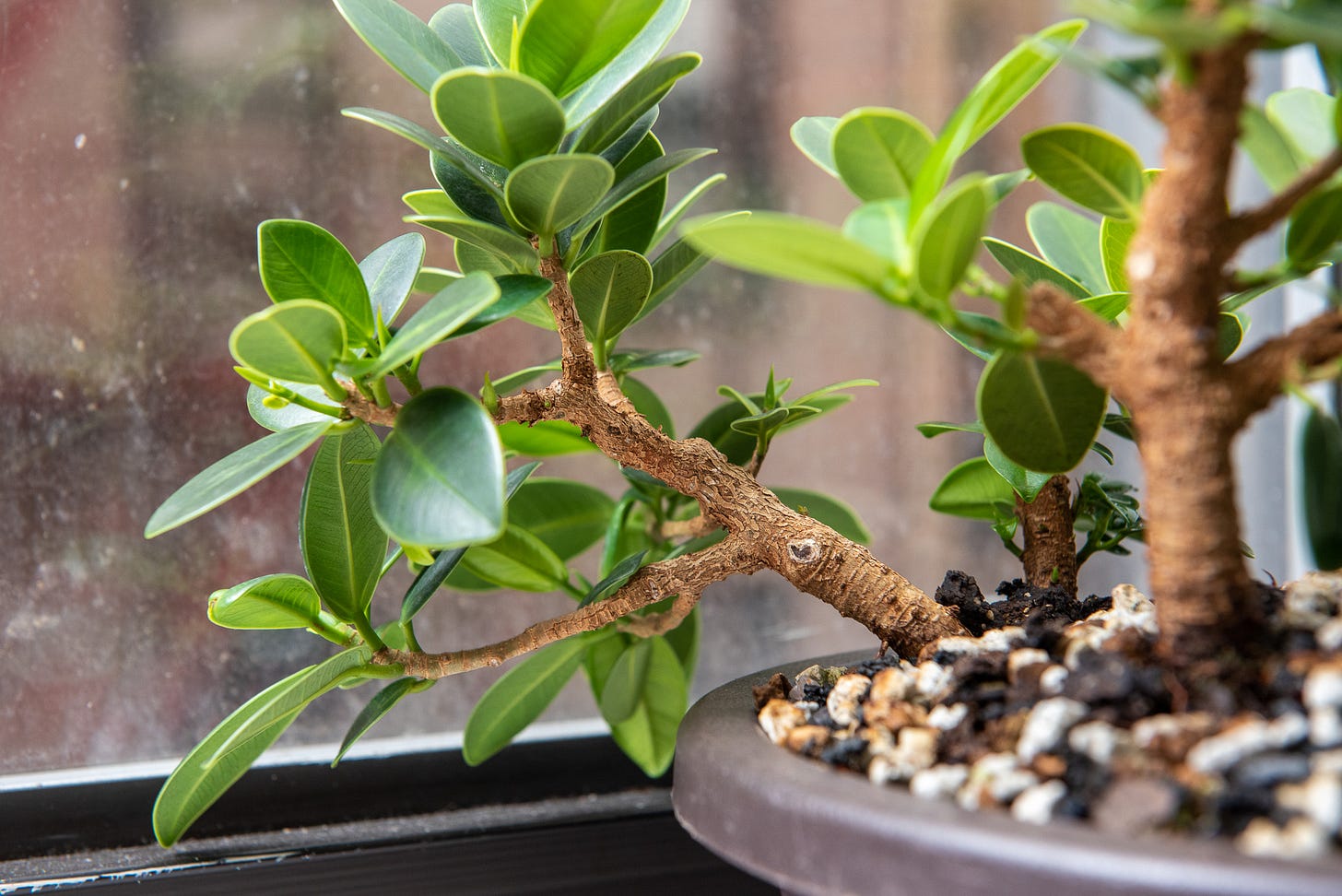
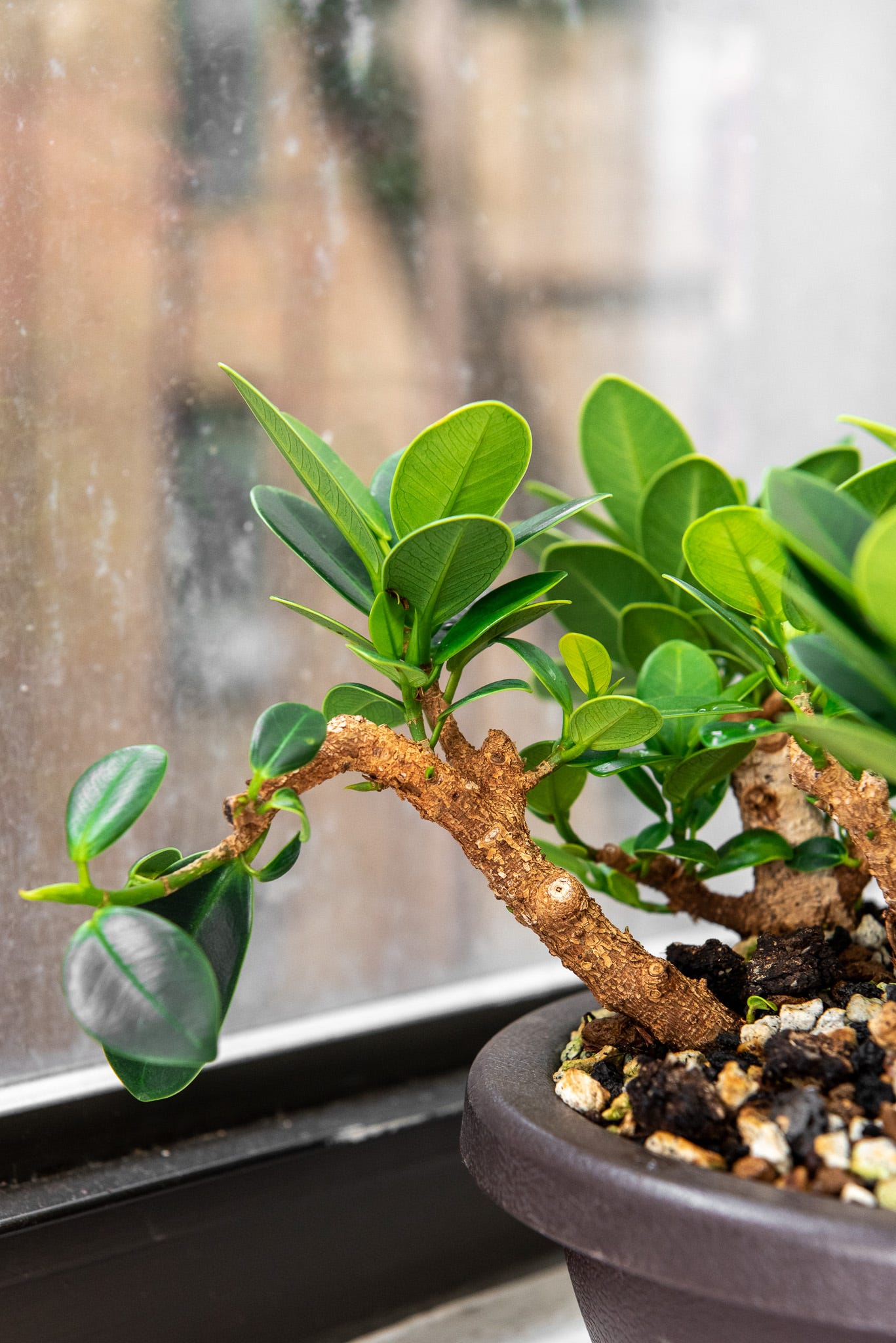
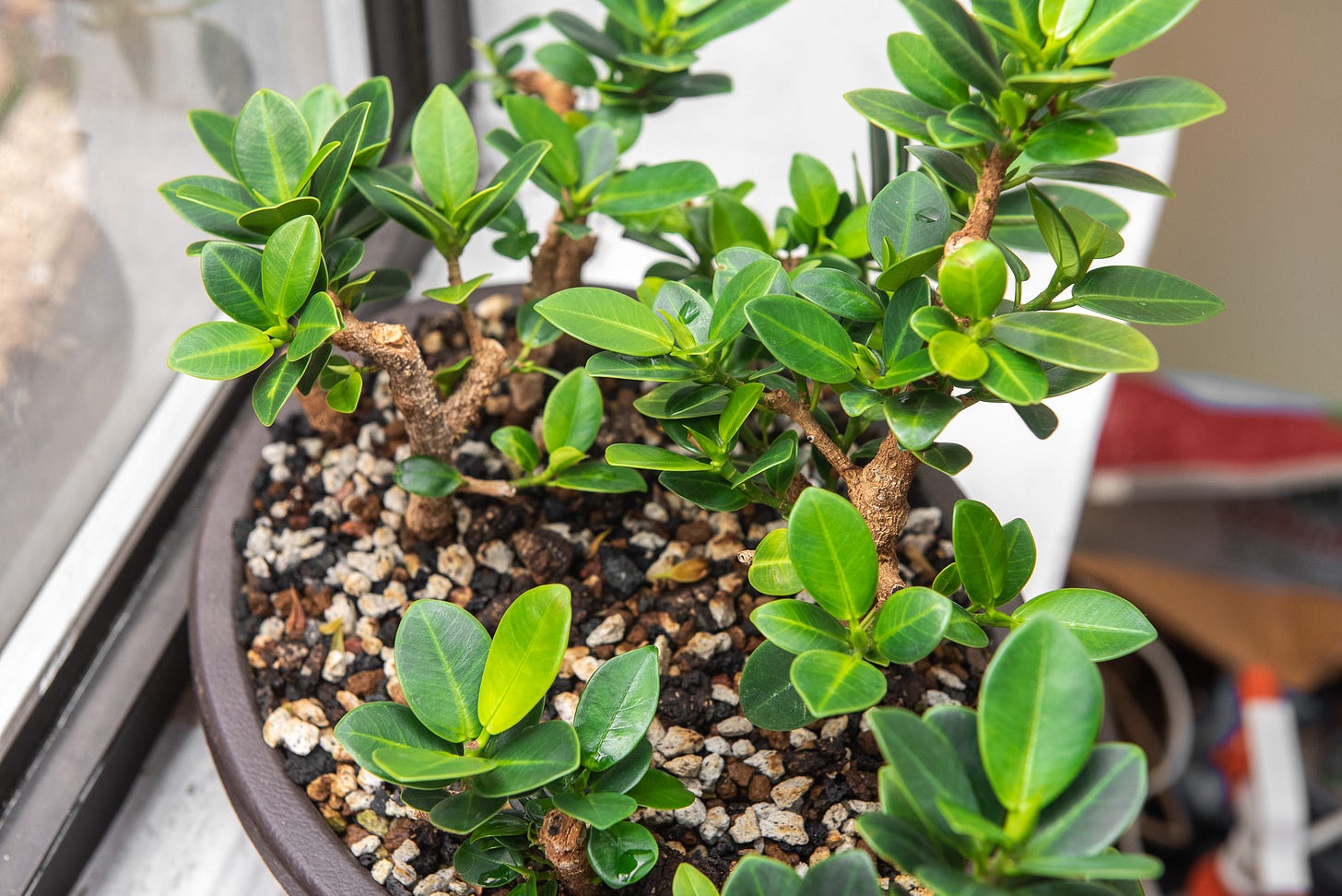
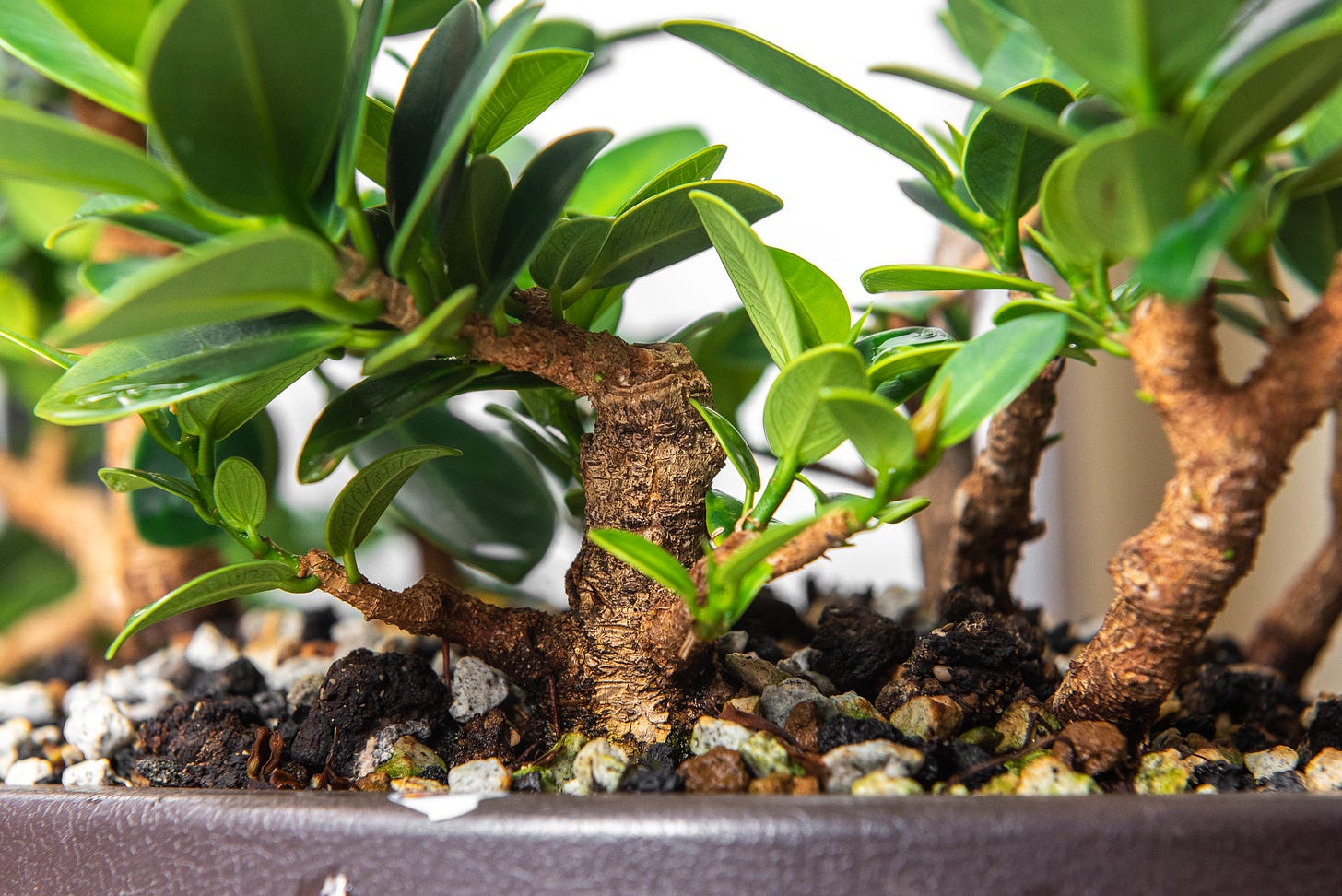
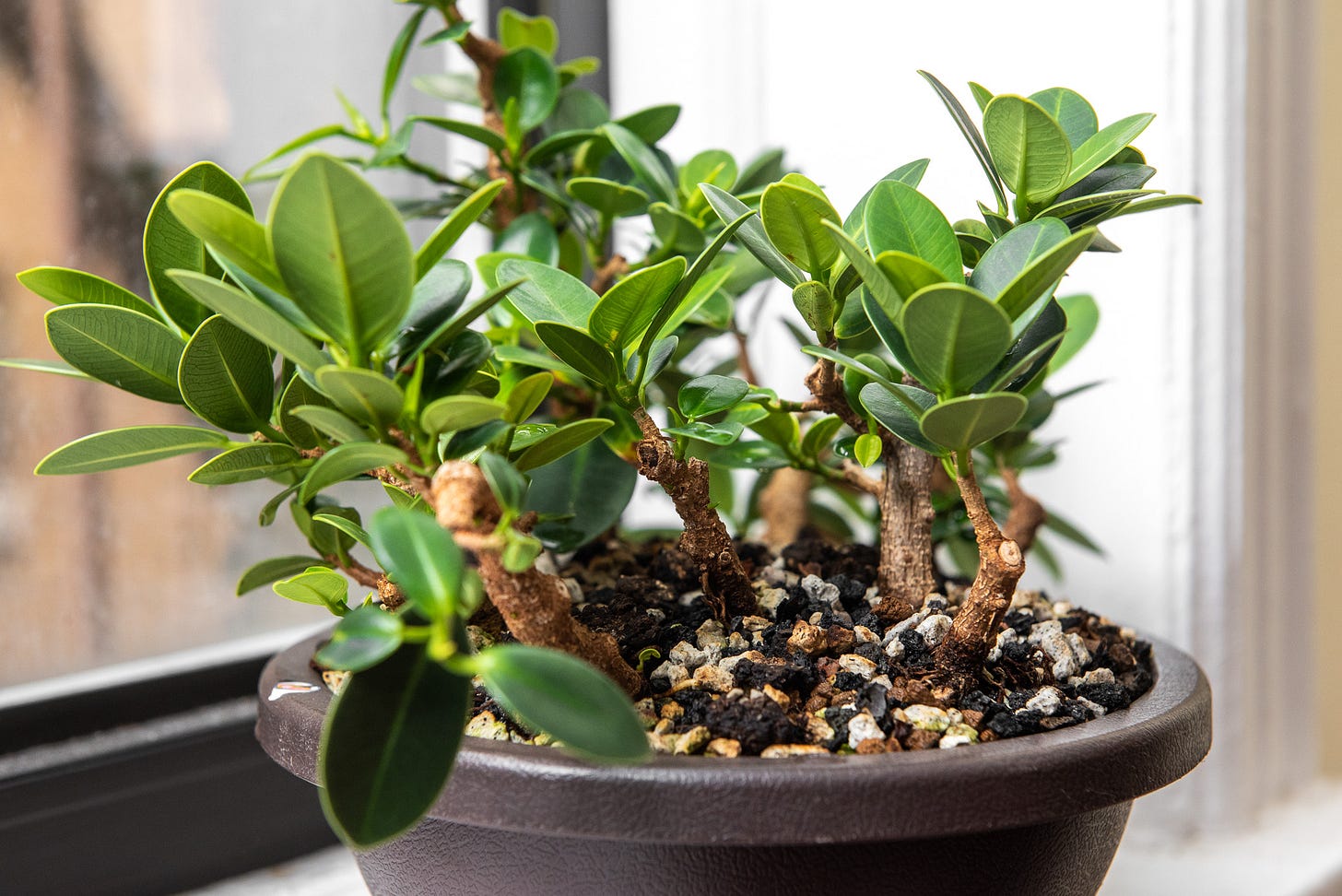

It's charming! I smiled immediately upon opening the email. What a lovely way to start the day.